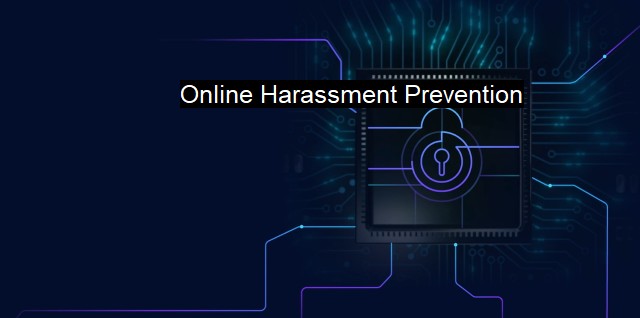What is Online Harassment Prevention?
The Rise of Online Harassment: Addressing Cyberbullying and Internet Trolls for a Safer Digital World
Online harassment prevention is a multilayered discipline aimed at ensuring internet safety while preserving users' overall digital wellbeing as comprehensively as possible. Its goal is to reduce and prevent cyberbullying, trolling, hate speech, identity theft, and other forms of online abuse and reprehensible behavior. it is concerned not only with stopping and mitigating malicious viruses, hacking, malware, phishing attacks, and spyware, but also with actively seeking to eradicate damaging online relational interactions and situations that may cause distress, discomfort, or harm to individuals and/or communities.Online harassment may encompass a wide range of offensive behaviors, from threatening or obscene emails and messages, privacy invasion, fraudulent misrepresentation, to menacing behavior targeted through electronic means, commonly via the internet. As the internet remains a crucial part of the everyday lives of many users worldwide, the need for prevention of online harassment emerges as a primary concern, impacting both individual and global interactions and affairs. Online harassment has devastating effects, including but not restricted to, stress, fear, depression, or psychological trauma – thus, emphasizing the necessity of robust prevention measures.
People must regard cybersecurity as central to preventing online harassment because unauthorized access to personal data can lead to cyberstalking and other forms of online harassment by revealing private information without consent. Security systems help safeguard user information and online activities that can protect individuals from potential online harassments. Regular updates of security systems and good cybersecurity practices could advance the protection of personal data and maintain one's safety on online platforms.
On the other hand, antivirus software, a key component of cybersecurity, does not directly deal with online harassment issues. it indirectly contributes to preventing forms of online harassment that hinge on malicious activities such as virus attacks, malware, and spyware. In other words, if an individual's device is infected by a virus, that virus can allow certain perpetrators to take control of or track the device, facilitating various forms of online harassment. Antivirus software contributes to addressing this risk by detecting and neutralizing these threats, thereby preventing someone from hijacking a device bluntly.
Preventing online harassment is a shared responsibility of individuals, security companies, online platform providers, and governing bodies. Technological mechanisms in place for detecting and broadly dealing with instances of online harassment are becoming more sophisticated, ranging from content filters to complex algorithmic design techniques aimed at recognizing and deescalating aggressive online interactions.
Online platforms can fuel online harassment; hence they must enforce community guidelines, introduce machine learning and artificial intelligence systems to detect harassment, and provide clear reporting mechanisms for users. Governing bodies and public institutions' roles are pivotal in establishing and enforcing laws against online harassment act, raising public awareness about online harassment, promoting safety education, and creating an atmosphere where users can constructively raise their concerns.
It is also crucial for users to educate themselves about online harassment and their prevention, be cautious while providing personal details online, use strong and different passwords for each online platform, maintain software and antivirus updates their personal devices, and report incidents of harassment immediately to the respective authorities.
Cybersecurity and antivirus play substantial roles in the prevention of online harassment as they form technical boundaries that deter culprits from conducting such disruptive activities. Online harassment prevention becomes more attainable when it is a collective effort, sharing both responsibilities and knowledge, ensuring safer, healthier engagement in the burgeoning cyberspace. Amidst technological advancements and the growth of globalization in the digital era, ensuring online harassment prevention fosters a better communicative environment promoting privacy, dignity, and mutual respect at its core.

Online Harassment Prevention FAQs
What is online harassment prevention?
Online harassment prevention refers to the measures and strategies implemented to protect individuals from any form of cyberbullying, cyberstalking, or other types of online harassment.What are some common forms of online harassment?
Some common forms of online harassment include cyberbullying, cyberstalking, doxxing, revenge porn, and hate speech.What are some effective strategies for preventing online harassment?
Effective strategies for preventing online harassment include being cautious about sharing personal information online, reporting abusive behavior, using privacy settings to control who can see your online activity, and avoiding engaging with trolls or online bullies.What role do cybersecurity and antivirus play in online harassment prevention?
Cybersecurity and antivirus software can help prevent online harassment by protecting against malware and phishing attacks that may lead to compromised accounts or personal information exposure. They can also help detect and block online threats such as viruses, spyware, or adware that may be used to harass or stalk victims.| | A | | | B | | | C | | | D | | | E | | | F | | | G | | | H | | | I | | | J | | | K | | | L | | | M | |
| | N | | | O | | | P | | | Q | | | R | | | S | | | T | | | U | | | V | | | W | | | X | | | Y | | | Z | |
| | 1 | | | 2 | | | 3 | | | 4 | | | 7 | | | 8 | | |||||||